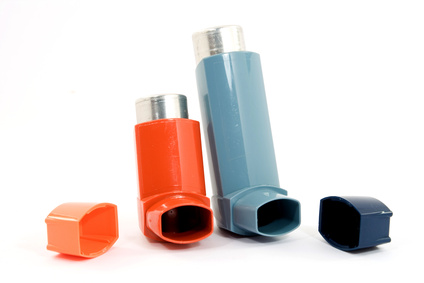Overview
The simple act of breathing requires no conscious attention; most of the time, you don't even realize you're doing it. But when breathing becomes difficult, there are few things you can focus on other than the movement of air into your lungs. Asthma is a disease that affects 17 million Americans, according to the American Academy of Allergy, Asthma and Immunology, and it can be life-threatening if not treated properly.
Respiration
When air enters the lungs, it flows from the trachea into tubes called bronchi, one leading into each lung. These tubes begin to divide and branch out into many tinier pathways, each ultimately leading to small sacs called alveoli, which connect directly to the cardiovascular system. In the alveoli, oxygen enters the bloodstream, where it then flows to cells, organs and muscles.
Asthma Relief - www.taylorstanley.com
Air-O-Swiss Air Treatment System with Kitz Air Purifier Solutions
Asthma
During an asthma attack, the walls of the bronchi become inflamed and swell. This restricts the airflow into the lungs, and in extreme cases the inflammation combined with mucus in the lungs can block them completely. Symptoms include gasping, coughing, wheezing and an inability to take a deep breath. The severity of asthma attacks can range from a mild inconvenience to an airway blockage that is life-threatening.
Triggers
In many cases, asthma attacks have a well-defined trigger, usually something in the environment. Common triggers include tobacco smoke, dust, mold, pollen and pet dander, but anything that can cause an allergic reaction may trigger an asthma attack. Another type of asthma occurs during exercise, when air entering the lungs during rapid breathing triggers a spasm of the bronchi. According to the American College of Sports Medicine, chronic asthma sufferers commonly suffer from exercise-induced asthma as well, but the two conditions can appear independent of one another.
Causes
The exact cause of asthma is unknown. Studies performed by the World Health Organization have found that genetic predisposition plays a large role, as does early and repeated exposure to allergens and pollutants. Air pollution seems to play a role in the growth of the disease, as it has become more widespread as the urbanization of society has increased.
Treatment
While there is no cure for asthma, there are treatments available that allow sufferers to live a relatively normal lifestyle. Daily doses of corticosteroids can reduce chronic inflammation of airways, reducing the possibility of an attack becoming severe and sometimes preventing symptoms entirely. When attacks do occur, bronchodilators work quickly to open up the bronchi and restore regular breathing. Both types of medication commonly appear in the form of inhalers, to increase the exposure of the lungs to the medication and allow it to work quickly.












No comments:
Post a Comment